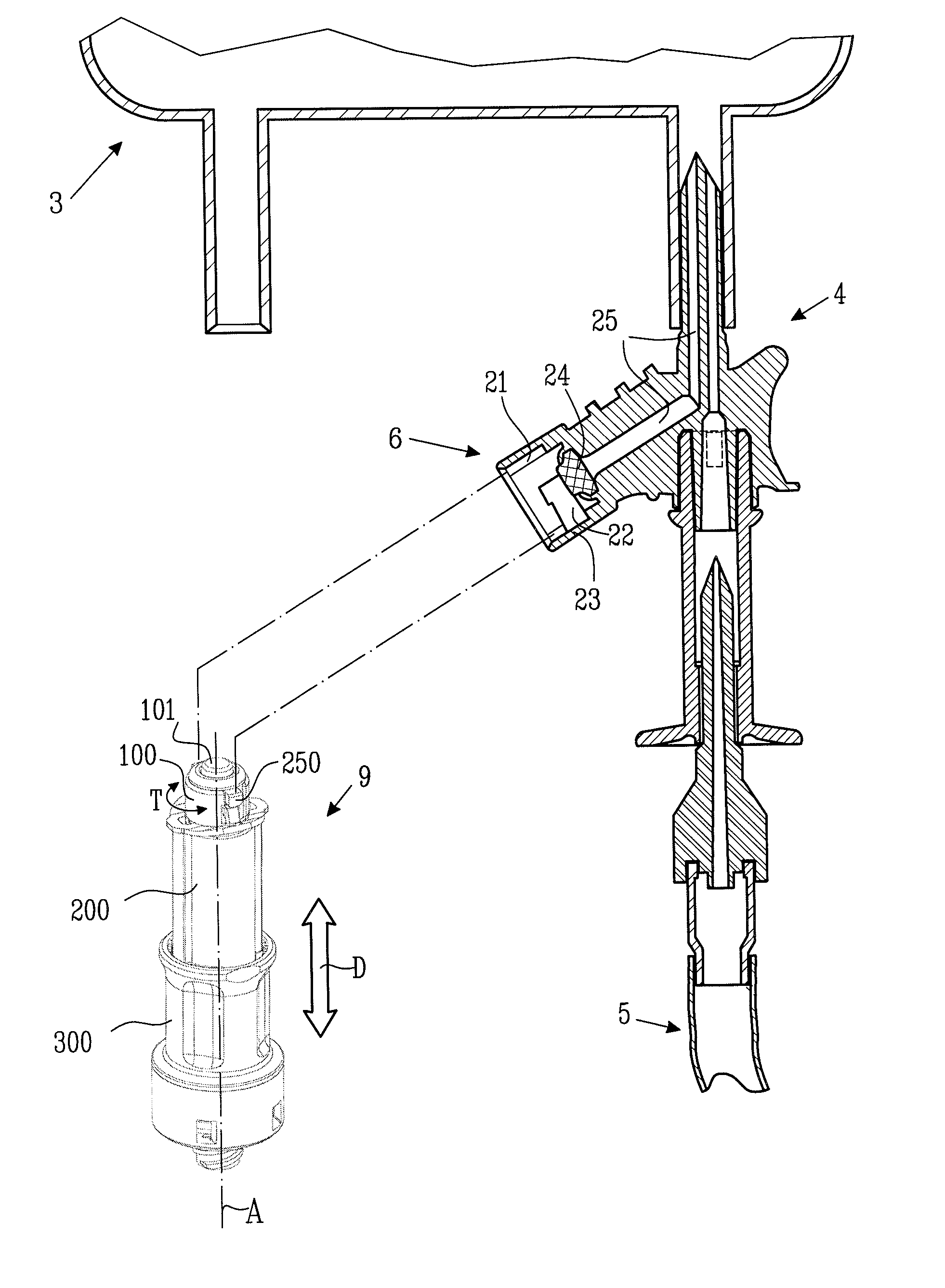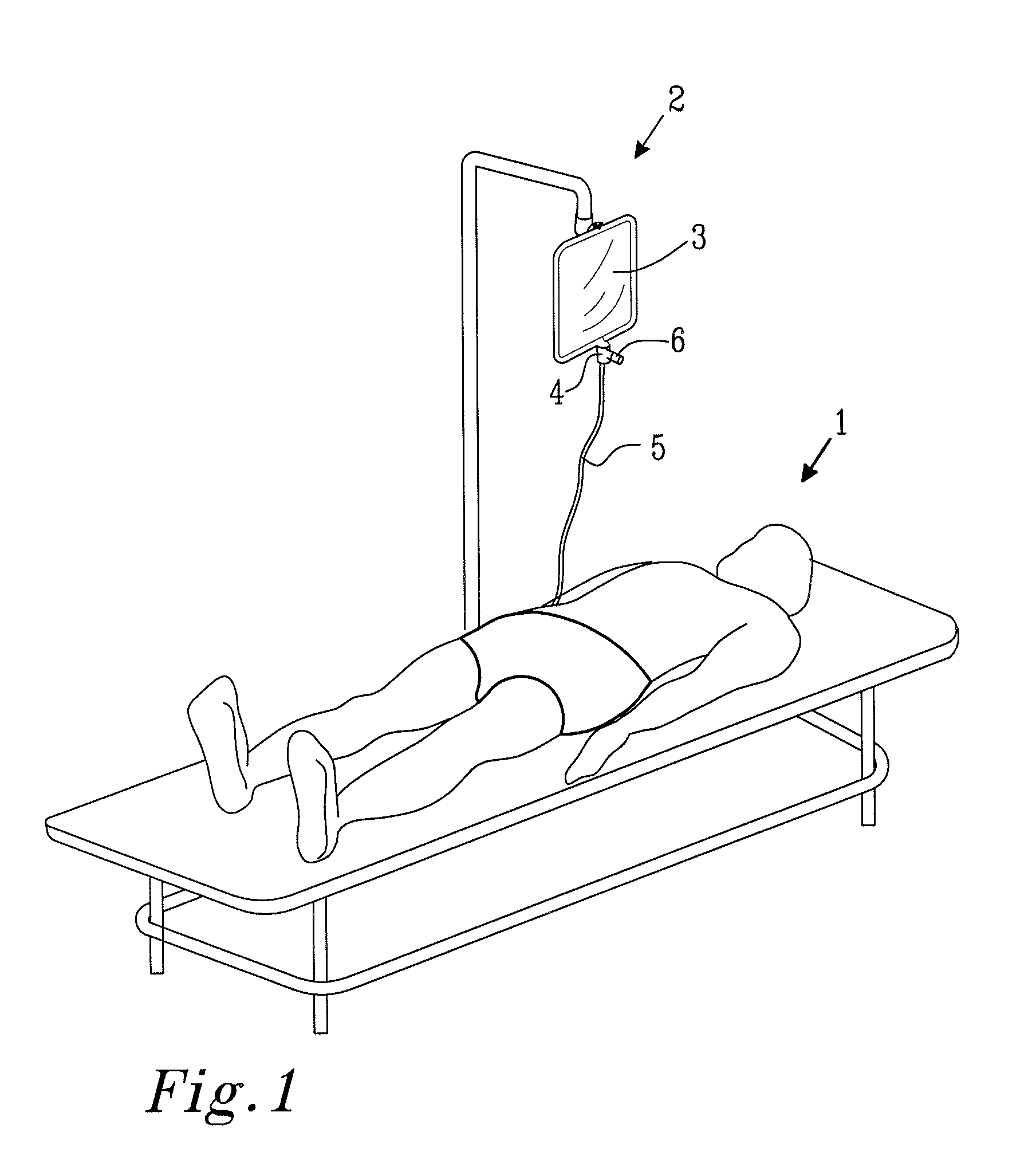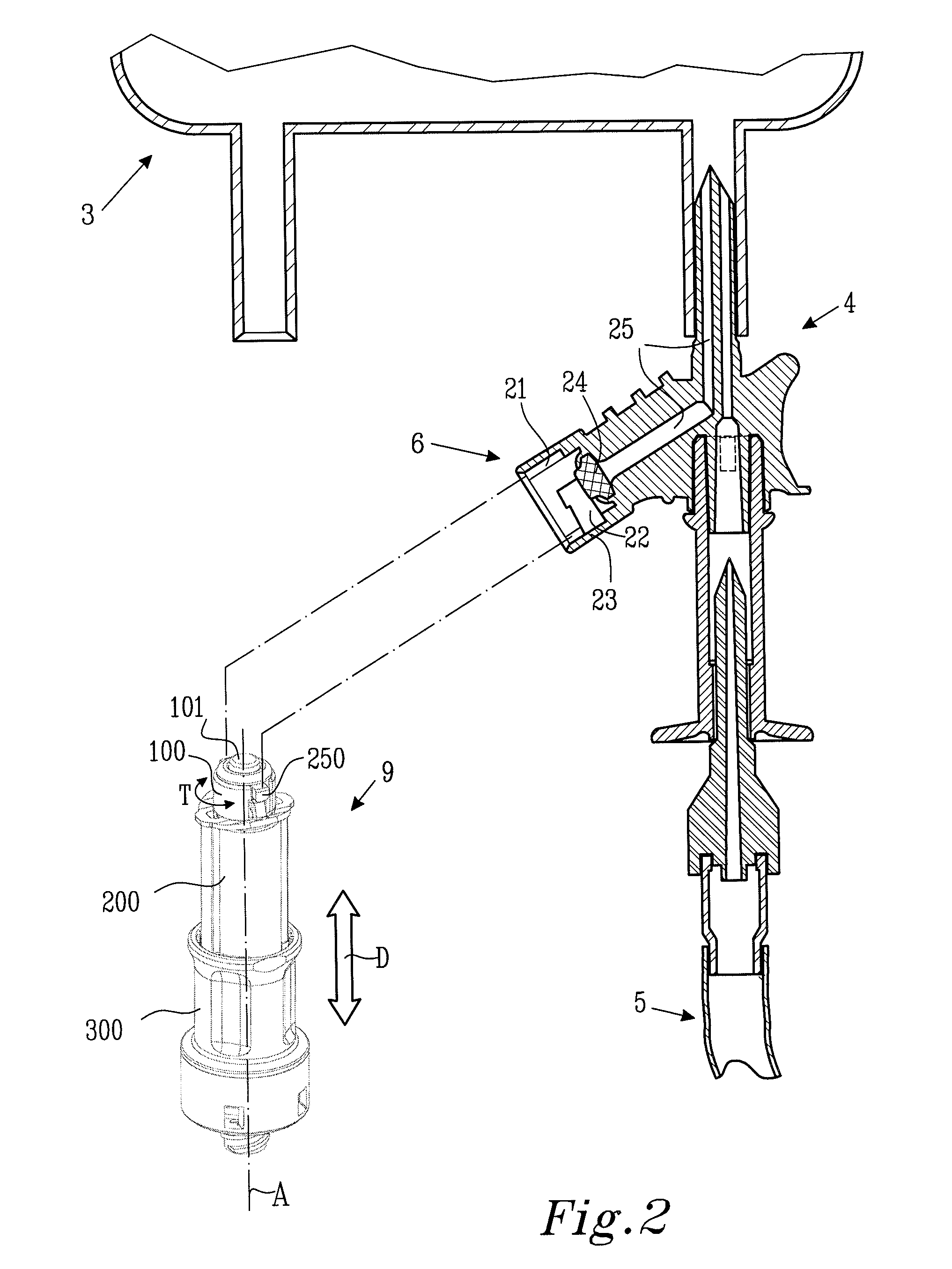Piercing Member Protection Device
a protection device and piercing technology, applied in the direction of intravenous devices, infusion devices, infusion needles, etc., can solve the problems of staff being exposed to medical fluid, drug or solvent exposure risk, and particularly serious problems, so as to effectively prevent the user from accidental exposure, prevent the exposure of at least a piercing tip, and reduce the amount of accidents and incidents
- Summary
- Abstract
- Description
- Claims
- Application Information
AI Technical Summary
Benefits of technology
Problems solved by technology
Method used
Image
Examples
Embodiment Construction
[0027]FIG. 1 shows a patient 1 that is being administrated with IV infusion from a medicament administration system 2 comprising a first fluid container 3 provided with a spike infusion device 4. The spike infusion device 4 comprises a fluid channel 5, in fluid communication with the blood circulation system of the patient 1, a piercing member (not shown), forced into the first fluid container 3, and a connection port 6, into which medicine can be administrated by means of a fluid injector device such as a syringe (not shown) connected to a piercing member protection device 9, comprising a piercing member.
[0028]FIG. 2 shows partly a cross section of a spike infusion device and a connection port 6 to which the piercing member protection device 9 may be connected e.g. during drug administration to the first fluid container 3, although the drug administration to the first fluid container 3 is preferably done before said medicament administration system 2 is connected to a patient. The ...
PUM
 Login to View More
Login to View More Abstract
Description
Claims
Application Information
 Login to View More
Login to View More - R&D
- Intellectual Property
- Life Sciences
- Materials
- Tech Scout
- Unparalleled Data Quality
- Higher Quality Content
- 60% Fewer Hallucinations
Browse by: Latest US Patents, China's latest patents, Technical Efficacy Thesaurus, Application Domain, Technology Topic, Popular Technical Reports.
© 2025 PatSnap. All rights reserved.Legal|Privacy policy|Modern Slavery Act Transparency Statement|Sitemap|About US| Contact US: help@patsnap.com



